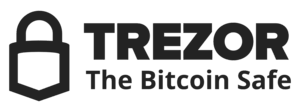The DAO Crossroads: Forking or Exploiting the Attacker
source: Bitcoin News
2016. Jun. 20. 12:17

There has been a lot of focus on what has been happening to The DAO. But it looks like the Slock.it team is planning a counter-attack. A plan of action is on the table as this situation needs to be addressed sooner rather than later.
Also read: Recession on the Horizon: What Will a Downturn Mean for Bitcoin?
Over the past few days, two separate attacks have plagued The DAO. The first attack saw over 3 million ETH being drained from their wallet and transferred to a child DAO. On Sunday, June 19, news broke about a second similar attack taking place. However, only 22 ETH was stolen during this attempt.
To Fork or Not To Fork?
One of the biggest questions DAO token holders are faced with is how they move on from here. Several proposals are on the table to solve this problem with pros and cons. Among these ideas is a soft fork proposal that would prevent all value transactions from going through The DAO or a child DAO. As a result, attackers and investors would not be able to move funds out of the current project.
That being said, there is a different solution, which would require the community to buy into the attacker’s child DAO. This particular proposal is getting a lukewarm reception at best, as it would not result in getting the stolen Ether back. What it would do, however, is ensure the assailant would not be able to dump the stolen funds on exchanges.
Depending on whom one poses the question to, the soft fork is either the best or the worst option. Ensuring the assailant does not get money out of his attack is a worthy cause. But DAO token holders want a bit more security than just that. A hard fork, on the other hand, would result in reimbursing the DAO tokens, but it would set a very dangerous precedent. A rollback of this kind would destroy the immutability of blockchain technology in the Ethereum space.
Exploiting The DAO Hacker
Another course of action would see The DAO creating a new proposal to use the same recursive split attack against the assailant. Granted, this would require a minimal amount of ETH being given to the child DAO. New tokens would be created in the child DAO, and the beneficiary address would have to be trusted by the original developers. Unfortunately for the technology used by the Slock.it team, any child project contains the same vulnerability as the parent project, and this could lead to a cat-and-mouse game between hackers and the original creators.
As one would come to expect from this approach, DAO Token Holders would need to vote on this proposal. Additionally, they would only have a two-week period to do so as well. Plus, the people who vote on this idea they can’t transfer or sell tokens. Moreover, pursuing this idea means there is no room for the soft fork proposal.
All of these decisions have to be carefully weighed by the community so that everyone fully understands the consequences. Regardless of the outcome, the Ethereum protocol will never be the same again.
What is the solution to these problems in your opinion? Let us know in the comments below!
Source: Slock.it
Images courtesy of Slock.it, Shutterstock
The post The DAO Crossroads: Forking or Exploiting the Attacker appeared first on Bitcoin News.





